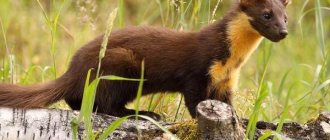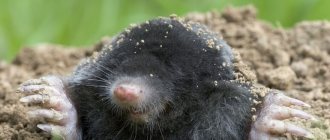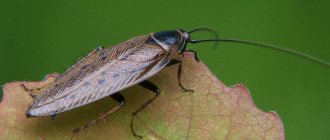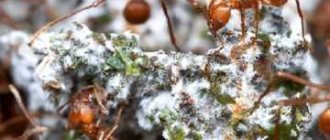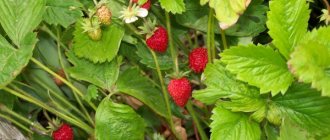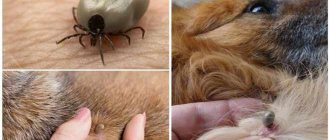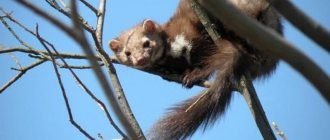Following in the footsteps of forest animals
The pine marten gave its name to a large group of forest animals - the mustelidae family.
She is a typical representative of this family. Her elongated body exudes flexibility and mobility. With equal agility, the animal moves on the ground and along tree branches. The marten is found throughout the forest and forest-steppe European part of the country, in the mountain forests of the Western Caucasus and in small numbers in the taiga of the Trans-Urals, east to the Ob. The size of the marten, compared with those of other representatives of the mustelidae family, is average. Body length 40-58, tail 20-26 centimeters, weight 1200-800 grams; the female is somewhat smaller. The lush and soft fur of the animal has been famous since time immemorial. The general tone of its winter color is dark brown, more intense on the upper part of the body and lighter, with a fawn tint, on the belly. On the throat, in the lower surface of the neck, there is a light (yellow, orange or brown) spot, which sometimes extends to the chest. Because of this spot, the pine marten was previously called the yellow marten, in contrast to the white marten, a stone marten that lives in the southern regions of our country. In areas of the European North, martens prefer to settle in spruce forests. In pine forests there is always less of it, since there the number of mouse-like rodents, the main food of this predator, changes more sharply than in spruce forests. Within its range, the marten is distributed unevenly. This is due to the degree of forest cover in a particular area, the feeding capacity of the land, the availability of food in different seasons and the presence of nesting conditions. In those places where the animal is not persecuted, it easily gets along in the immediate vicinity of populated areas, easily tolerates even an anthropogenic landscape and can stay in a small forest island with an area of several hundred hectares. The number of martens varies slightly over the years. This is explained by its polyphagous nature and the ability to switch from one food to another, i.e., to compensate for the lack of main food at the expense of secondary ones. The food range of this predator is large and extremely varied. Its main food is forest voles and forest birds, mainly hazel grouse. The marten also eats squirrels, small birds and their eggs, frogs, lizards, insects and their larvae, and is very fond of honey. Her plant food consists of various berries, primarily rowan. In the southern part of its range, the animal also eats the fruits of wild fruit trees and grapes. Males are capable of attacking such relatively large animals as the white hare and wood grouse, but this is a rather rare prey for a predator. In general, the male’s food range is noticeably more varied than the female’s. In the Arkhangelsk region, for example, in the diet of a male there are 11 food items in winter and 14 in summer, while a female has 6 food items in winter and 9 in summer. than males, they eat small birds, insects, shrews, as well as plant foods. Males with greater physical strength and, in particular, stronger jaw muscles, make fuller use of the potential food supply. The difference in nutrition between males and females is beneficial for the species, as it leads to a more rational use of food reserves in nature when obtaining food. The marten's stomach holds 130-150 grams of food - this is the optimal daily requirement. Typically, the stomach of a hunted marten contains from 60 to 90 grams of food. The marten provides itself with food and does not follow in the footsteps of other predators. At the same time, its reserves and scraps are picked up by such “freeloaders” as the fox, ermine, and in the northern part of the range, wolverine. The best shelter for this predator is the hollow of an old tree. In spruce-broad-leaved and mixed forests there are many hollows, and their presence does not limit the distribution of martens. In clean spruce forests there are fewer of them, and here the predator often uses a squirrel’s nest for housing. The marten's rut occurs in July-August. Pregnancy lasts 230-275 days. The development of embryos is delayed at an early stage and resumes only at the end of winter, and therefore during the fishing period it is impossible to distinguish a pregnant female from a barren female by its internal organs without special research. In April-May, the female gives birth to three to four blind cubs, which gain their sight at the age of one month. In the fall, the brood disintegrates, and by the fishing season, the young of the year are almost no different in growth from adult animals. The marten’s entire life takes place within a fairly clearly defined area of the forest - this is its individual habitat. In males and females, the areas are most often adjacent, and sometimes partially coincide. The growing young remain on the mother's site until autumn, and disperse in late autumn or early winter. At this time, traces of martens appear in areas where they were not previously present. If the young of the year do not find free areas in the depths of the forest, they move to the edges, small forests, young plantations, forest islands among clearings and burnt areas, and generally to lands of poorer quality. Most of the young animals in these lands are hunted in the first season by hunters. The sizes of individual marten areas vary. In the northern part of the range, where food is scarce, they are extensive; in the southern regions, richer in food, they are smaller. For example, on the Kola Peninsula, marten hunts in an area of up to 50 square kilometers, in the middle zone - 5-6, and in the Caucasus, often less than one square kilometer.
Rice. 14. Imprints of the front (above) and rear blunder of a marten
Rice. 15. Marten tracks on loose snow In the snow, the predator leaves characteristic five-fingered paw prints, very large for such a relatively small animal. This is explained by the fact that in winter the soles of lal martens are overgrown with thick, hard hair and their supporting surface increases sharply, which makes it easier for the animal to move in loose snow. In this regard, the marten's tracks have soft outlines, the pads of the fingers are faintly imprinted on the snow, and the tips of the claws leave noticeable marks. They are especially clear during a thaw, on wet snow, when, as hunters say, the animal leaves a “printed” mark. Usually the marten moves by jumping - galloping, leaving paired paw prints, and placing its hind paws exactly in the prints of the front ones. When running this way, the animal, as if changing its pace, moves its right or left paw a little forward. The length of the jump depends on the speed and condition of the snow cover. At fast speeds and in dense snow it is 60-70 centimeters, on ascents, descents or at slow speeds 40-50.
Chasing a hare or escaping from enemies, the marten runs in a quarry: prints of four, less often three, paws are left on the snow, with the prints of the hind paws in front of the front ones. Hunters call such a trail “four-chet” or “three-beam.” This is a rare gait of the animal. When searching for or storing prey, the marten walks in small steps and the paw prints are located not in one line, but in a zigzag pattern, in a herringbone pattern. Deep and loose snow makes it difficult for the predator to move. despite the width of her paws. In such conditions, her jumps are short, 30-35 centimeters, and she plunges 9-10 centimeters into the snow. Marten tracks are difficult to confuse with the tracks of other animals. However, her four-bead tracks are somewhat reminiscent of the jumps of a mountain hare. They also have some similarities with sable tracks. In those places where both of these animals live, the track encountered can sometimes be perplexing: it can be difficult to find out from it whether a sable or a large marten has passed through here. Zoologist V.V. Raevsky, who worked for a long time in the Northern Urals, noticed that the sable, unlike the marten, has more elongated paw prints and shorter jumps. In addition, according to the hunters, he notes that when jumping, the sable places its paws parallel, while the marten places its paws somewhat differently: with its heels together and its toes apart. When tracking an animal, its sex can be determined not only by the size of the mark, but also by its urinary points, of which there are at least a dozen during the daily course of the marten. If a bright urine spot, standing out sharply on the white snow, is located between the elongated prints of the hind paws, it means that a female has passed through here, but if some object away from the print of the hind paws has been sprayed with urine, it is a male.
In summer, the marten leaves barely noticeable marks. However, its presence in the lands during the snow-free period can be established by excrement, which is found on stumps, wells, trunks of fallen trees, on protruding roots at the butt of a tree, on old anthills, and sometimes just on the path. Marten excrement, eight to ten in length and one to one and a half centimeters in diameter, is sausage-shaped, usually spirally twisted, and its ends are pointed and elongated. It is easy to notice in them the remains of undigested food: small bones of mouse-like rodents and birds, wool, feathers, pieces of chitin, seeds, berry shells, etc. The droppings have a musky odor that lingers for a long time. Many people believe that the marten leads a semi-arboreal lifestyle. However, the closer you get to know the life of this animal, the more convinced you are that this is not so. Tracking the marten convinced me that it is a true terrestrial predator. I walked hundreds of kilometers in marten tracks: no more than one percent of this path was on horseback. Only in order to rest, when chasing a squirrel and feeding hazel grouse, the marten of its own free will climbs a tree and moves along the branches. The marten obtains its main food on the ground. In the second half of winter, when due to the depth of the snow, she even settles down for the day in rented shelters - under heaps of brushwood, in hollows, in voids under windbreaks, hidden snow, where it is warm and safe. It’s a different matter if the marten is being pursued by enemies. Agile and agile, she rarely becomes a victim of larger predators, but she is still caught by a fox, lynx, wolf, eagle owl or golden eagle. It is in these cases that the marten uses its ability to escape in trees. Once, in the Prioksko-Terrasny Nature Reserve, I read from the tracks that a fox attacked a marten, digging out from under the snow the remains of a hare that had not been eaten by some predator. The marten jumped onto the nearest spruce and, despite the fact that the fox gave up pursuit, covered more than a hundred meters, jumping from tree to tree, before descending into the snow. A marten is riding while being pursued by a hunter with dogs. This is precisely what served as the reason to consider it a semi-arboreal animal. The nature of the marten's hunting pattern varies depending on the type of land and the prey it encounters in one place or another. On the outskirts of clearings or in sparse forests, the animal’s trail spreads in a straight line. Its main prey in such places is black grouse, white partridge, and sometimes capercaillie. These birds spend the night under the snow, and in order to find evidence of them, a predator must travel a long distance. From a distance, following the footsteps of the merchant, he notices bird feeding areas, slows down, stops and then walks around.
Approaching three to four meters to a sleeping bird, it apparently instinctively determines the place where it is hiding under the snow and rushes towards it in sharp short leaps. In sparse stands, the animal, as if playing, often jumps three to four meters onto tree trunks while running, and then jumps onto the snow. Apparently, these jumps help navigate the terrain. When hunting in spruce forests, the marten leaves a different type of trail. Here she moves in short jumps, and sometimes in steps. Its path is winding, stretching from one windbreak to another. The predator constantly climbs under the rubble of trees, but it is not possible to trace its hunt in labyrinths or under snow-covered snags. Sometimes, if you look under a pile of dead wood, you can find the feathers of small birds: tits, woodpeckers, jays or cuckoos.
Rice. 17. Unsuccessful marten hunt: 1 - search; 2 - stacking the loot; 3 - throw at the bird; 4 - take-off of the black grouse In severe frosts, birds climb to spend the night in the voids under the rubble, and therefore become easy prey for martens. Here, in the spruce forest, while examining the rubble, the marten comes across roosting hazel grouse and catches them more successfully than other forest birds. But most often in such places the predator manages to catch voles, which serve as its main food. The trail of a marten going for the day is relatively straight; the animal does not scour from side to side, as when searching for prey. Heading to the shelter, the marten usually walks the last ten meters on horseback, even if the entrance to the hollow is located at the base of the tree. Staying hunting until dawn, which often happens, the marten may encounter a squirrel that has already gone out to feed. More than once I had to read from the tracks how a predator rushes to catch a squirrel digging a cone out from under the snow, and it usually leaves it on horseback, easily jumping from one tree to another. The fact is that a marten, much more often than a squirrel, has to jump into the snow and climb up the trunk again, since it cannot jump from a high tree to a low one, like a squirrel. This is explained by its large weight and shorter fingers, which are not typical for the poison dart frog.
Catching a squirrel is not an easy task for a marten. However, in years when squirrels are numerous, they more often become victims of predators, since sick and weak, i.e. non-viable, individuals appear in their population and it is not difficult for a marten to catch them. When the number of squirrels is low, as a result of natural selection of the first population, only healthy animals are preserved, which are much more difficult for a predator to obtain. Therefore, in years of low squirrel numbers, the marten practically stops pursuing these rodents, although on its daily search route it repeatedly crosses their tracks. The daily movement of the pine marten in the taiga of the Onega Peninsula, according to my observations, in some cases can reach 14 kilometers. On this long path, the predator goes under the rubble more than a hundred times in search of Rodents, looks through dozens of bog bird holes, makes several throws to catch a hazel grouse, before it manages to provide itself with a daily diet: approximately four to five voles. Having caught a larger prey (squirrel or upland bird), the marten remains in the nearest shelter for two or three days, content with the supply of food. Often the daily movement does not bring her luck, and she limits herself to visiting the places of previous successful hunts, where she gnaws bones and tendons again. Eating carrion by a marten also serves as an indication that this predator with a wide food specialization often experiences difficulties in obtaining food. That is why one or two animals remain near the corpse of an animal or near the entrails of an elk caught by hunters for a long time, until the supply of food by them or other predators is completely used up. The smell of carrion is very attractive to the marten. The incident convinced me of this. In the taiga of the Onega Peninsula, on the shore of a forest lake, I discovered a perennial nest of a golden eagle. On the ground under the nest and under the neighboring pine trees, which served as a perch for the bird, there was a mass of bones - the remains of the predator's victims. Among the bones belonging to hares, muskrats, hog and waterfowl, I collected parts of the skeleton and skull of ten martens. Some of them stayed here for more than five or six years. It is unlikely that a golden eagle, a large bird with a huge wingspan, can catch a marten, an agile and fast land animal that is nocturnal, among dense vegetation. The golden eagle does not hunt at night and, apparently, only the instinct to protect the chicks forces it to kill the animals that were attracted to the nest by the smell of the abundant remains of the numerous meals of this feathered predator. Many forest predators can compete with the marten for food. The main one is the fox. In the European North, this has become especially noticeable in recent decades, when, following deforestation, the fox penetrates into remote areas where it was not previously present.
The composition of the food of these two predators in the forests of our Non-Black Earth Region is very similar: for both, the main food is voles and upland birds. These predators, one might say, “divided” the voles among themselves : the marten eats mainly red forest voles, and the fox eats more often large and less mobile gray ones, which stick to more open places. But upland birds - hazel grouse, partridge, black grouse and, to a lesser extent, capercaillie - are common food items for both predators. Watching martens in the remote taiga corners of the Onega Peninsula, where the fox had not yet penetrated, and in the Vologda forests, thinned by logging, where there are many foxes, I noticed a difference in their behavior. In the north, the marten, having caught a hazel grouse, partridge or other bird and having had enough, hides the remains of food somewhere under logs or simply buries them in the snow and returns here the next night or after an unsuccessful hunt. In the Vologda forests, all the remains of the marten’s food are found and eaten by the fox, and therefore the martens have adapted to drag them up a tree and in this way save them for themselves. The marten has an amazing ability to remember places where food remains were hidden after a successful hunt. Once I was following the trail of a marten and clearly imagined how the animal, crossing a small moss swamp, seemed to remember something: it sharply turned at a right angle to its course and in large leaps headed towards an old stump sticking out of the snow, two to three hundred paces away. aside. Near the stump there was a black hole in the snow, into which a marten climbed. The exit trail showed that it was no longer there, but in order to find out what the animal was doing there, the hole had to be dug up. Under a meter-long layer of snow and a little to the side, between the splayed roots of a stump, the remains of the marten’s former meal were discovered - bones with tendons, tail and flight feathers of a capercaillie. The marten got the bird a long time ago, maybe even before the snow fell, and feasted here, probably, for several days. Now bare frozen bones are useless to her, but she loves to visit the places of previous successful hunts and remembers them well on her site. There was a case in the Bashkir Nature Reserve that confirmed the marten’s good memory and knowledge of its area. The predator ravaged the wood grouse's nest, stole and hid the hatched eggs. Only in the middle of winter, following the tracks, it was noticed that she visited this area and dug out from under the snow an egg that had been hidden six months ago. Even before the October Revolution, the pine marten population in the European North was undermined by predatory fishing. In the vast taiga areas it was completely exterminated. Only a long ban on hunting in Soviet times restored the marten population in its former range, and currently, in all northern regions of the European part of the country, licensed fishing for this valuable fur-bearing animal is permitted.
Difference in structure
There are two types of rats found in homes – gray and black. The black one is covered with dark brown fur, so it cannot be confused with a mouse. The gray rat, or pasyuk, is more common.
Pasyuk is a fairly large rodent; the body length of an adult varies from 17 to 25 cm. In addition to size, there are a number of anatomical differences; you can distinguish a mouse from a rat by the following characteristics:
- The length of the mouse tail is equal to the length of the body or slightly less; the tail is quite thin, covered with small hairs. The rat's tail is about half the length of its owner, hairless or bristly, powerful, especially at the base.
- Mouse ears are large relative to the size of the body, round, wide at the base, and not covered with hair. Rat's are small, triangular, hairy, tapering near the head.
- The mouse's paws are designed so that it is easy to climb vertical surfaces: thin, with sharp claws, the fingers are located side by side. Rat paws are wider and more muscular; these rodents run fast and jump well. There are membranes between the fingers; on the palm they look like large folds of skin.
- The Pasyuk's head is longer and cone-shaped, while in mice the angle of the muzzle is much wider and looks like a flattened triangle.
- Mouse eyes are large, expressive, convex, and are clearly visible on the muzzle. Rat cats are smaller relative to the body, deeply set.
- The neck of the mouse is almost invisible, the silhouette of the animal is close to a ball, while the pasyuk has a longer body and a well-defined neck.
- The fur of the bulk of house mice is gray, with a cold tint; the color of rat fur is much warmer, brown or gray-brown.
Features of the skeletal structure of the rat
There are a total of 264 bones in the rat skeleton. The spine has 3 sections: cervical, thoracic and sacral.
The rat’s skull is elongated and consists of 17 bones, 6 of which are unpaired. Like all mammals, the skull is divided into 2 parts: the brain and the face. By the way, as for the brain, its mass is about 1% of the total weight of the individual.
The tail is thick and long, reaching 85% of the length of the animal’s body. Interestingly, females always have a longer tail. The tail is not covered with hair: here we can see scaly rings covered with yellow fat and bristles.
Triple teeth, or why do rats always chew something?
A rat's incisors do not have roots and continue to grow throughout their lives, while there is enamel only on the front surface of the tooth, and there is no such coating at the back. Thus, the teeth are ground unevenly and are shaped like a carpenter's chisel.
It is the continuous growth of the incisors that makes rats constantly chew on something. Their teeth grow so rapidly that if the animal cannot grind them down, then, soon, it simply will not be able to completely close its mouth, which will cause discomfort. That is why the cage should always contain small wooden blocks, sticks and tree branches - everything that the animal can chew without harm to its health.
General information
For many, animal tracks are just paw prints or paths trodden by forest inhabitants, but for professional hunters, this is everything that the animal left on a certain section of its route. It could be a broken or eaten branch, nut shells, or the remains of prey. Here you can see droppings, which is also a kind of trace.
To detect burrows and nests of animals, bird nests, the hunter tries to obtain as much information as possible. Therefore, even a feather lost by a wild duck or hazel grouse or a piece of fur caught in a bush can tell an experienced tracker a lot.
Wild animals have excellent sense of smell, hearing and vision and also behave very carefully. Having noticed a person, they may not run away or fly away, but simply hide and wait. Therefore, the main key to unraveling the mysteries of the life of animals is, first of all, their traces
Therefore, the main key to unraveling the mysteries of the life of animals is, first of all, their traces.
Knowing and studying the tracks of wild animals, birds, insects and reptiles will make it possible not only to find out who you are dealing with, but also how old the track is and the direction of movement of the animal. All this together allows you to hunt effectively without being distracted by the animal’s old footprints, and also to eliminate unnecessary encounters with a predator. Skillful reading of animal prints significantly reduces hunting time. It’s good to have an experienced tracker when studying them, but even without one, with perseverance, you can achieve positive results.
Precise prints are clearly visible on wet, freshly fallen snow no more than 5 cm thick. At this time, you can familiarize yourself with the tracks using the example of domestic animals - cats, dogs, pigs, goats, cows, ducks, etc. There are features that need to be kept in mind:
- The tracks of a large dog are very similar to those of a wolf.
- Felines are similar to larger prints of their wild counterparts: jungle cat, lynx, leopard, tiger.
- The markings of a pigeon's paws are similar to those of a partridge.
- The tracks of a cow are similar to the outlines of the hooves of an elk, a large wild boar, etc.
Based on comparisons and comparisons, features of fingerprints are learned that simply could have gone unnoticed. By analyzing them, you can find out about the number of individuals, but not in the case of wolves. They have a specific ability to follow a trail.
Area
The optimal conditions for the existence of the pine marten, in which it feels most comfortable, are oak, spruce, and fir mature forests, tall-trunked, hollow, with dense thickets of dead wood. But its range is by no means limited to such territories.
Yellowfly can be found:
- in Western Siberia;
- in the Northern Urals;
- in forests of Western Europe;
- in the area of alpine meadows;
- in Scotland;
- in the Caucasus and other regions of Western Asia;
- in the Mediterranean (Sicily, Majorca, Corsica, etc.).
The animal does not like areas abounding in rocky areas, as well as rocky landscapes.
Reproduction
Mating in this species occurs in the warm summer season. During this period of time, females experience estrus; it lasts 2-4 days. There are not enough males for all the females, so the male mates with several females in turn. In winter, males are characterized by false mating periods : during this time, aggressive males pester females, but mating itself does not occur.
Pregnancy is very long, lasting about 274 days . In fact, the baby develops in the womb for only 30-40 days, the rest of the time is occupied by the latent stage.
Before giving birth, the female begins to carefully prepare for the appearance of offspring. Selects a place to build a nest. The nest is ready, the female remains in it until giving birth. Cubs are born in the month of April, weight does not exceed 40 g, length 11 cm. Newborn babies are blind and deaf at birth, hearing emerges on the 23rd day of life, they begin to see on the 28th day of life.
The mother tries not to abandon her children, leaving the nest only during the hunt. If the cubs are in danger, the mother either moves the small pine martens to another location or eats the entire brood.
For the first month and a half of life, the cubs feed only on their mother's milk, and they rapidly gain weight. After a month and a half, the grown cubs go hunting with their mother and actively explore the territory near their native nest. Until autumn, children live with their mother, then each begins an independent life. There have been cases where the cubs remain with their mother until spring. At the age of 2 years, representatives of mustelids are fully sexually mature. Conception usually occurs in the third year of life.
